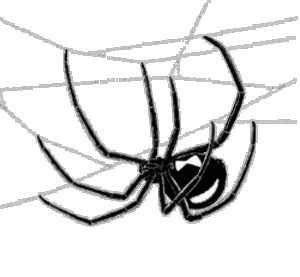ADHD: Attention Deficit / Hyperactivity Disorder is a condition of impaired concentration and activity level that has received increasing amounts of attention over the past decade. An illness usually first diagnosed in childhood, many adults are now being diagnosed with this illness as well. ADHD is the most common psychiatric diagnosis made in children and affects from 8-10% of children totaling nearly 4 million children with the diagnosis in America alone. ADHD is diagnosed 3 times as often in boys than in girls, creating controversies over whether or not ADHD is merely a reflection of a personality trait or temperament more commonly found in boys rather than an actual illness. Increasing numbers of adults are also concerned that they may have ADHD as well and they are seeking diagnosis and treatment. ADHD is thought to affect approximately 2-4% of adults with 67% of the children diagnosed with ADHD continuing to have the disorder as adults.
So what are the symptoms of ADHD? How can you know if you or your child has ADHD? According to the Diagnostic and Statistical Manual of the American Psychiatric Association, ADHD consists of 6 of the following symptoms present for at least 6 months:
-does not pay close attention to detail with schoolwork
-can not sustain attention on tasks
-does not listen well
-fails to finish tasks, poor follow-through
-difficulty organizing
-avoids tasks that require sustained mental effort
-loses things
-easily distracted by outside stimuli
-often forgetful in daily activities
OR
The following symptoms of hyperactivity or impulsivity have been present for 6 months:
-fidgets or squirms often
-leaves seat when not supposed to leave seat
-runs or climbs excessively
-can not play quietly
-often “on the go”
-often talks excessively
-often blurts out answers prematurely
-has difficulty waiting turns
-interrupts or intrudes on others
Further criteria for the diagnosis include that some of the symptoms should have been present before age 7, symptoms are present in at least 2 different settings and the symptoms must cause significant impairment.
When is ADHD usually diagnosed? Many times, a parent may begin to wonder if the child is overly active in the preschool years. The child may perhaps have difficulty adjusting in preschool. However, the symptoms of ADHD can be considered normal at the preschool age of development so the diagnosis is not usually made at that time. As the child continues on to school, teachers may begin to complain that the child is exhibiting symptoms of ADHD. In fact, in many cases, the teacher may make the diagnosis and even suggest that the child be medicated! Rules and regulations are now in place to prevent the diagnosis of ADHD by teachers. Instead, teachers are asked to discuss their findings with the parent and allow the parent to make further decisions about evaluation and treatment. As stated earlier in the article, some patients may not seek treatment until adulthood although they may have struggled with the symptoms for years without recognition of what was wrong with them and without treatment.
How is the diagnosis of ADHD made? The diagnosis of ADHD at this time is always subjective as no blood test or brain imaging test is used for the routine clinical detection of ADHD. Typically, the diagnosis is based on a series of questionnaires given to the child’s teachers and parents. These questionnaires are then scored and the score on the questionnaire determines whether or not the child will be diagnosed with ADHD. One problem with the diagnosis of ADHD is that the child’s behavior can vary across settings and according to task they are presented with. For instance, in the doctor’s office or at a non-custodial parent’s home the child may be well-behaved but at the other parent’s house and at school they may exhibit ADHD symptoms. Likewise, symptoms vary according to how interested the child may be in the activity they are asked to complete. The same child who may not sit more that 5 minutes to complete a math worksheet can spend hours playing and concentrating on winning a video game. Special care must be taken to be sure that what is being diagnosed is an actual illness and not just an active personality type.
What are the treatments available if you or your child is diagnosed with ADHD? Medication treatment with a stimulant medication, most commonly with methylphenidate (trade name is Ritalin) is the current gold standard of treatment for ADHD. Ritalin has been used for decades for the treatment of problems with inattention. In recent years, new formulations of Ritalin have been introduced. These new formulations were created to allow for Ritalin to be taken more easily by schoolchildren as they allow for once-a-day dosing. Previously, students had to disrupt their classes to report to the nurse’s office to take the medication. Now, many children can just take a pill in the morning before school and they do not need an additional lunchtime dose. Another common drug treatment is the mixed amphetamine salts such as those known by the trade name of Adderall. This medication also has been used for decades for the treatment of ADHD. Like Ritalin, it also comes as a once-a-day now for ease of use and administration by schoolchildren.
How would a stimulant work to treat ADHD? This is not entirely known as the exact brain dysfunction thought to cause ADHD has still not yet been completely defined despite years of searching. However, the theory is that the stimulant medications stimulate the part of the brain that causes one to pay attention better and to manage hyperactivity and impulsivity. Research is being done with cutting-edge imaging technology such a P.E.T. scans in an attempt to finally pinpoint whether or not there is a discrete brain anomaly that causes ADHD. Most studies to date have been small and not definitive. Genetic studies as well are being conducted. It remains difficult to separate the effects of environment from those of genetics but these issues are being pursued as well with the hope of finding a disease-basis for the ADHD label.
Stimulant medications have some potential problems associated with their use. First, they are potentially addicting and as such they have certain rules associated with their use. They are controlled substances and as such they must not be refilled. Also, they must be kept with care as they do have a street value especially among high school and college students. Current studies however do not show an increased risk of addiction among those taking the medications as prescribed for ADHD. Potential side effects of stimulant medications include decreased appetite, nervousness, mood changes, increased hyperactivity, difficulty sleeping and decreased growth rate.
A new medication in an entirely different, non-stimulant class is called atomoxetine (brand name is Strattera). Atomoxetine is a selective norepinephrine-reuptake inhibitor. Exactly how it reduces the effects of ADHD is not completely known. Side effects may include liver failure (just recently added warnings have been placed on Strattera for this reason), stomach pain and upset, nausea, vomiting, decreased appetite and erectile dysfunction. Strattera is to be used in children over the age of 7 and adults diagnosed with ADHD.
Non-medication treatments of ADHD include behavioral strategies for home and school as well as education of parents, children and teachers about ADHD. Behavioral strategies may include reward systems to encourage the child to stay on task as well as tips on how to get organized at home and at school. Parents should learn effective parenting strategies to help their ADHD child. Teachers should understand how classroom strategies, such as putting the child’s desk near the teacher’s desk, may help the child with ADHD perform better at school.
If you think that your child has ADHD, here are some suggestions of steps to take:
• Have a conference with your child’s teacher to find out what is happening in the classroom.
• Spend some time observing your child in various settings at various times and write down your impressions.
• Keep a diary of your child’s behaviors at home. Do you notice any patterns like more misbehavior in the evening or when hungry or tired?
• Experiment with changing the home environment. What kind of changes seem to help and which make the behavior worse?
• Seek treatment from an experienced children’s mental health practitioner or pediatrician. Come to the visit prepared with your notes and observations.
Overall, parents must play the lead in advocating for their child who may have ADHD. Be concerned, get active, ask questions and never settle for less than what you and your child deserve which is a thorough evaluation and discussion of treatment options.






